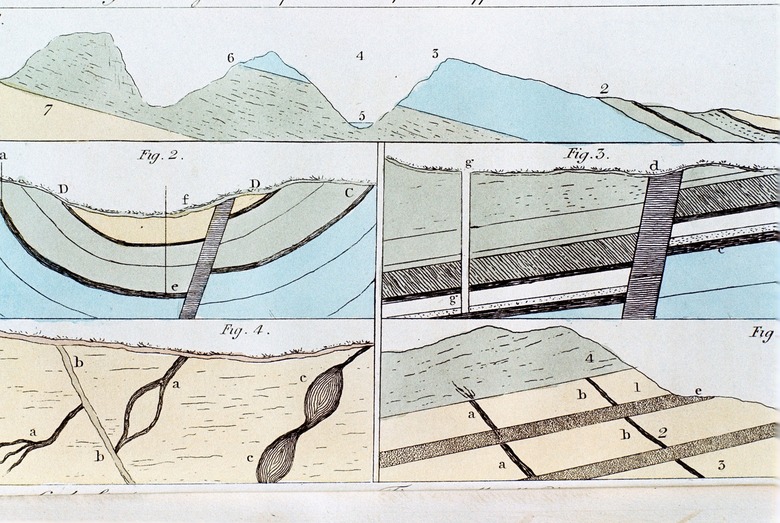Theory That Explains The Changes In The Earth's Crust By Internal Forces
The Earth's crust is subject to change due to a variety of forces. External forces that bring about changes in the Earth's crust can include meteorite impact and human activity. The theory that explains changes in the Earth's crust by internal forces is called plate tectonics. This theory suggests that crust is divided into a number of different sections, the motion of which gives rise to many of the changes humans observe in the crust.
The Theory of Continental Drift
The Theory of Continental Drift
The theory of plate tectonics arose in response to the appearance of the continents. Looking on a world map, you can see that many of the separate continents of Earth fit together. For example, the western coast of Africa seems to fit nicely against the eastern coast of South America. In 1912, a German scientist named Alfred Wegener proposed that all of the continents were once united in one landmass he called Pangaea. Wegener hypothesized that, over time, Pangaea broke up into many different pieces, and the continents drifted into the locations we know them to have today. Wegener suggested that the Earth's centrifugal and tidal forces caused the continents to drift.
The Development of Plate Tectonics
The Development of Plate Tectonics
Many scientists did not immediately accept Wegener's theories, largely due to the lack of a convincing mechanism. Eventually, studies of the ocean floor in the 1950s led to a revival of interest in the theory of continental drift. The work of Arthur Holmes was of particular interest during this revival. In the 1920s, Holmes had proposed that convective motion in the planet's mantle — motion caused by heat –caused continental drift. This became the primary mechanism plate tectonics uses to describe the motion of the continents; the convection of the Earth's mantle brings about motion on the Earth's crust.
The Nature of Plate Tectonics
The Nature of Plate Tectonics
Scientists divide the Earth's crust into seven major plates, the Antarctic, Pacific, Eurasian, North American, South American, Australian and African plates. The various plates are moving in different directions. Convergent boundaries are sites where plates are moving toward each other. Divergent boundaries are the sites where plates are moving away from each other. Lastly, transform boundaries are the sites where plates are moving along the boundaries of one another. Scientists also divide the Earth into a number of smaller, minor plates that further contribute to geologic activity.
Effects of Tectonic Motion
Effects of Tectonic Motion
The motion of the plates is slow compared to the speeds at which humans are used to moving. Relative to each other, the plates move up to 20 centimeters per year. While people don't feel this motion under their feet, it has fairly massive consequences on the surface. For example, the boundary areas of major tectonic plates have a high concentration of earthquakes. One of the specific mechanisms of earthquakes is called subduction. Subduction involves one plate slipping under another, into the Earth's mantle. This motion also affects the volcanic activity and formation of mountain ranges on a plate.
Cite This Article
MLA
Murmson, Serm. "Theory That Explains The Changes In The Earth's Crust By Internal Forces" sciencing.com, https://www.sciencing.com/theory-explains-changes-earths-crust-internal-forces-21417/. 24 April 2017.
APA
Murmson, Serm. (2017, April 24). Theory That Explains The Changes In The Earth's Crust By Internal Forces. sciencing.com. Retrieved from https://www.sciencing.com/theory-explains-changes-earths-crust-internal-forces-21417/
Chicago
Murmson, Serm. Theory That Explains The Changes In The Earth's Crust By Internal Forces last modified March 24, 2022. https://www.sciencing.com/theory-explains-changes-earths-crust-internal-forces-21417/
